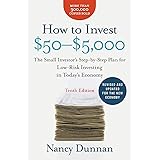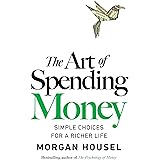When it comes to building a successful investment portfolio, many people get overwhelmed by the number of options available. But the process can be broken down into a series of steps that set you up for success, from setting financial goals to choosing investments to meeting with a financial planner.
Before you pick any investments, start by making a list of all your short- and long-term financial goals. This will give you a sense of why you’re investing and how much risk you’re willing to take. Once you have a clear idea of what you’re looking to achieve, you can then make a list of all the assets you’re willing to hold, including mutual funds, exchange-traded funds, individual stocks and bonds. This is where you’ll need to decide how much risk you’re comfortable taking on and how long you’ll need to hold the investments until you need them.
Once you know the goals and time horizon you’re willing to invest for, you can begin constructing your portfolio by determining what percentage of your investments should be invested in each asset class. For example, if you’re planning to invest for many years and have plenty of room in your budget for temporary market drops (i.e. you have a high risk tolerance), you might want to choose a more aggressive growth portfolio that is weighted toward stocks.
On the other hand, if you’re close to retirement and need the money from your investments soon, you’ll likely prefer a more conservative income portfolio that is weighted toward dividend-yielding bonds and cash investments. Regardless of your risk tolerance, you should always diversify your portfolio so that when one investment is dropping, another is gaining.
It’s also important to consider the account type you’ll use to hold your investments and how it will align with your specific goals and investment style. For instance, a tax-advantaged account like an IRA or 401(k) works well for achieving long-term goals and can be diversified to accommodate any risk tolerance level. A taxable brokerage account is ideal for mid- and long-term goals that require more upside potential, but can still be diversified to match your risk tolerance.
The final step is to find an advisor you trust to manage your portfolio. Once you’ve found a professional, you’ll work together to build a diversified investment portfolio that aligns with your unique financial goals and tolerance for risk. You’ll review your progress on a regular basis and adjust your strategy as needed to ensure your investments are on track to help you reach your goals.









